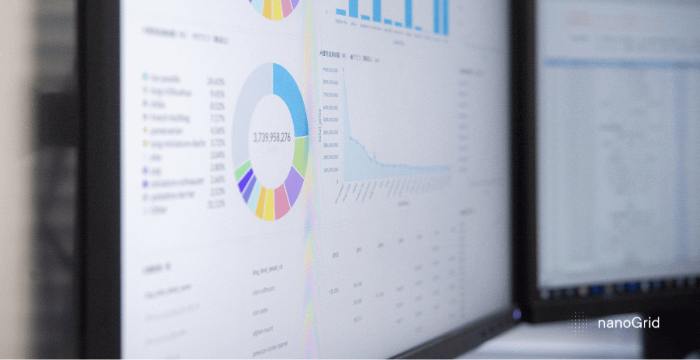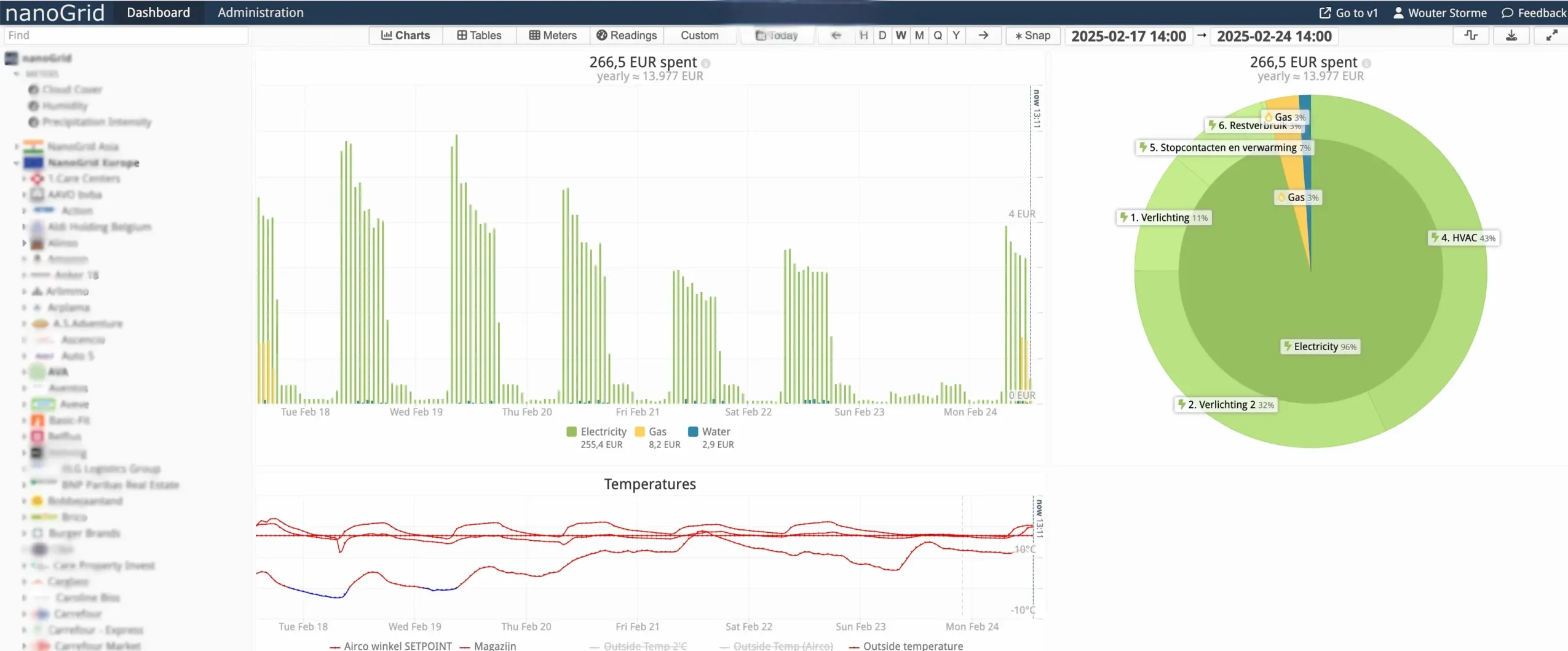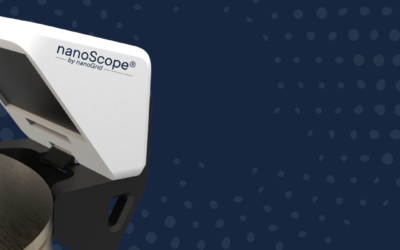Lowering your utility costs used to mean swapping out light bulbs or insulating roofs. But for today’s enterprise-level companies and multi-site property owners, energy efficiency is no longer a hardware issue, it’s a data issue.
The real challenge? Without a clear view of what’s happening behind the meter, businesses are flying blind. Relying on estimates, lagging reports, or gut feeling. That’s where utility data management comes into play.
From cutting waste to automating certain sections of ESG and CSRD reporting, it’s the backbone of any serious energy efficiency strategy.
Let’s explore how utility data management and analytics unlock more than just savings.
Utility data: the new efficiency driver
Energy efficiency used to be a matter of lowering bills and upgrading equipment. Today, it’s much more strategic. For enterprise-level companies and multi-site property owners, energy performance now impacts everything from operating margins, ESG/CSRD reporting to GRESB, CRREM and LEED scores.
And that makes one thing clear: energy efficiency is no longer just a cost issue. It’s more a data issue.
Without accurate, real-time insights into how utilities are used, businesses are forced to rely on estimates, assumptions, or outdated consumption reports.
Interested in learning more about how big data is transforming utility management?
Check out our article on big data energy to explore its role in smarter energy decisions and operational efficiency.
What is utility data management, really?
Utility data management is the centralized process of collecting, organizing, and analyzing utility consumption data. Including electricity, gas, water, heating, and cooling, across one or more sites.
It’s more than a digital dashboard. When done right, it connects data to action.
Think of it as the brain behind smart energy strategies. It tracks utility use hour by hour, room by room, or meter by meter, and translates that into actionable insights: where energy is wasted, where peak loads occur, and how buildings compare over time.
Additionally, it’s also important to note what utility data management is not:
- It’s not just submetering. Submeters supply the raw data, but the real value lies in how you use that data.
- It’s not a BMS (Building Management System): which controls systems but may not analyze performance.
- It’s not old-school energy reporting, which relies on monthly bills or piles of excel files.
Instead, utility data management integrates multiple sources, like smart meters, submeters or IoT sensors. And pushes that data into a centralized, cloud-based system.
From there on, stakeholders can automate reporting, “real-time” monitor inconsistencies, benchmark against targets, and ensure ESG compliance.
And here’s the key point: the value isn’t just in having more data – it’s in using it. Plus, having the most reliable and correct data.
After all, a smart meter is no smarter than an analog one if it’s not connected to a smart platform.
Why energy efficiency needs utility and energy data analytics
Before going further into energy data analytics, it’s important to understand the difference between energy efficiency and energy investment. A distinction that shapes smarter decisions.
Energy efficiency vs. Energy investment
In our experience, many still believe that energy efficiency only comes after major investments, like solar panels, insulation, or heat pumps. But that’s energy investment, not efficiency itself. But true efficiency isn’t about how much you spend. It’s about how actively you work to improve sustainability.
You can invest in sustainability, or you can optimize what you already have.
Consider this: a brand-new, high-tech building can still operate inefficiently if it’s not properly monitored or managed. Meanwhile, a 20-year-old site can perform better at energy consumption with proper energy monitoring and finely tuned operations.
Energy efficiency starts with knowing where the loss of energy is — and for that, you need reliable data.
At nanoGrid we deliver complete utility data coverage through our on-site hardware installed by our team, combined with a powerful SaaS platform for full visibility.

Understanding the concept of utility data analytics
In a nutshell, utility data analytics is the process of turning raw consumption data – from actual usage (like electricity, gas, water, heating, and cooling). Into something more meaningful and actionable.
It’s not just about just some graphs. It’s about turning numbers into decisions:
- Where is energy leaking at night?
- Which sites consume more despite having similar layouts?
- When do peaks occur, and can you shift or avoid them?
More than just charts or dashboards, utility energy data analytics gives companies the ability to detect trends, compare performance across buildings, and predict what’s likely to happen next.
It’s the foundation of any energy efficiency solution that scales.
What utility data analytics unlocks that raw data can’t
A spreadsheet of monthly bills won’t tell you that the heating ran all weekend in an empty office. It won’t show you that a lighting circuit was stuck on for weeks due to a misconfigured schedule.
Utility data can help you take control in areas like:
- Spotting inefficiencies instantly:
Analytics flag unusual spikes in HVAC use, water consumption, or electricity load, helping teams act before costs pile up. - Benchmarking performance across sites:
With a data-driven view, you can compare locations, departments, or even equipment to find out which assets are lagging behind, and why. - Building smarter energy strategies:
Across an entire portfolio, analytics help optimize energy efficiency solutions — from retrofits to behavioral change, with clear ROI attached to each action.
Utility data management for building owners: from oversight to insight
Building owners must balance two priorities. On the one hand, they’re responsible for utility infrastructure and cost control. On the other hand, they need to meet regulatory requirements and sustainability goals. All while keeping their tenants satisfied.
The catch? Most owners are flying blind when it comes to energy use and efficiency.
That’s where utility data management steps in. Instead of scattered, incomplete excel files, uncomplete monthly reports, or reactive maintenance. It can provide owners a centralized, real-time view of what’s happening with their utilities across the entire portfolio.
From disconnected meters to a single source of truth
In a typical commercial building or mixed-use building, utilities are measured by a mix of main meters, submeters, and smart.
Data is delayed, incomplete, or missing entirely. It’s hard to trace back energy loss and anomalies – let alone prove them.
With proper utility data management and utility monitoring. Every meter, from the main grid input to subzones like parking garages, EV-chargers, production lines, or ventilation systems are connected and feeding utility data in a central platform.
Utility monitoring is the starting point for real energy efficiency
No building becomes energy efficient overnight. But nearly all waste starts with a lack of visibility.
Let’s take a common case of nighttime energy loss: compressors running after hours, ventilation system is always-on, gas heating firing up way before anyone’s arrived. Without real time monitoring and alerts. These costs stay hidden and pile up over time.
Smart utility data management platforms allow owners (and occupiers) to:
- Set up real-time monitoring and detect unusual usage instantly
- Receive alerts when systems stay active during off-hours or for water leaks
- Track consumption patterns to understand the real behavior of each zone or tenant
- Benchmark and sites or regions to detect underperforming buildings or misconfigured systems
From Capex drain to operational advantage for building owners
Many commercial real estate owners hesitate to invest in new systems, worried about Capex (Capital Expenditure) overhead and long-term ROI.
But when utility data management is offered as a service, rather than a one-off investment, it shifts the burden from Capex to Opex, making energy management far more manageable and cost-effective. What used to require upfront infrastructure now becomes a subscription with built-in value:
- Lower operational waste.
- Faster detection of leaks, faults, and inefficiencies.
- Reliable data stream for ESG and CSRD reporting.
- Higher BREEAM, CRREM scores and building value over time.
Full control of utility data
Utility data management puts building owners back in control. In many markets, utility providers still own the main meters, and the data. Forcing owners to wait days or even pay for access. With submetering and real-time monitoring, you bypass the grid operator and gain direct visibility into your consumption.
No more delays. No more guesswork. This shift turns utility data into a strategic asset.

Utility data for occupants: control, accountability & cost savings
Most tenants get a bill, not the full picture. They rarely know what’s behind their utility usage or how to take control of it. Without access to real-time data, there’s no way to monitor usage, respond to spikes, or prove their commitment to sustainability goals.
Utility data management changes that. It gives occupants the visibility they need to take control of their consumption.
From frustration to transparency
Without proper data, efforts toward energy saving feel like guesswork. A facility manager might lower the thermostat or switch off lighting systems, but without seeing the actual impact, it’s impossible to measure progress or justify investments.
With centralized utility data, occupants gain:
- Live access to consumption data by department, floor, or function
- Trend insights across seasons, occupancy levels, and operations. By comparing utility data over time.
- The possibility for automated alerts when energy or water use deviates from expected patterns
It transforms passive tenants into active participants in sustainability efforts.
Cutting costs starts with clarity
When energy costs spike unexpectedly, tenants are often the first to notice. But the last to understand why. Was it a malfunctioning chiller? A ventilation system running all weekend? Or just seasonal changes?
Utility data management systems help answer those questions in minutes, not weeks.
Supporting internal sustainability goals for occupants
More and more occupiers have ESG reporting goals and net-zero targets. But many struggle to back those goals with actual data.
A corporate head of sustainability might ask for Scope 1 and 2 emissions breakdowns across offices. Only to receive vague estimates or aggregated utility bills.
With robust utility data management, occupants can:
- Track emissions linked to specific locations or activities
- Prove reductions in consumption over time
- Export verified data for ESG, CSRD, or internal reporting
- Share insights across departments to engage more teams
For occupants, utility data isn’t just nice to have. It’s a strategic enabler.

Conclusion: Utility Data Management Turns Guesswork into Strategy
Energy efficiency doesn’t start with equipment. It starts with visibility.
Without utility data management, buildings leak energy in silence. For example, HVAC systems running at night, water leaks unnoticed, lighting left on for days. These aren’t rare glitches. They’re daily inefficiencies hiding in plain sight. And they cost more than you think.
Utility data management changes that. It brings every meter, every building, and every kilowatt into focus. It tells you what’s happening, where it’s happening, and sometimes what to do about it.
From portfolio benchmarking to real-time alerts, from cost control to sustainability compliance, it transforms raw data into measurable impact. For both owners and occupants, it’s not just a tool, it’s a competitive advantage.
Curious how at nanoGrid, we deliver near-total utility data coverage for clients like WDP, CBRE, and Krëfel? Reach out and our team will get back to you shortly.




